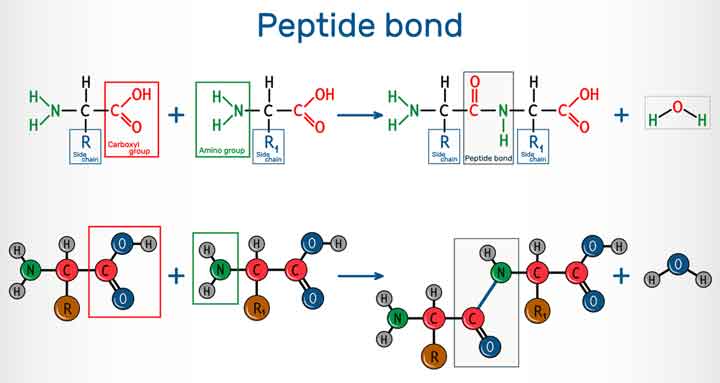The Early Chemistry of Peptides, Purines, and Sugars

Hermann Fischer discovered the peptide bond and won the Nobel Prize for Chemistry in 1902 for groundbreaking work on the structure and properties of purines and sugars.
Hermann Fischer was born in 1852 at Euskirchen in Germany. Emil’s father reputedly thought him too stupid to be a business man, so sent him to Bonn University in 1871 to study chemistry! Only one year later, Fischer moved to the newly established Strasbourg University, being strongly influenced by Baeyer. Fischer took his Ph.D.in 1874, his thesis concentrated on fluoresceine and its derivatives.
The Discovery of Phenylhydrazine
In 1874, Fischer discovered phenylhydrazine, perhaps accidentally. This greatly influenced his later work and eventually led to the synthesis of many important dyestuffs and pharmaceuticals. His meteoric rise saw Fischer move to Munich University in 1875 and continue earlier work on hydrazines. A new theory on the composition of triphenylmethane derivatives followed, many of which subsequently proved invaluable pH indicators.

The Structure and Properties of Purines
As Professor of Chemistry at Erlangen University, Fischer studied caffeine and theobromine (found in tea and coffee), elucidating the composition of many related compounds in 1881. Between 1882 and 1906, at Erlangan, Würzburg and finally Berlin University, Fischer completed studies on the structure and properties of purines and sugars bringing him widespread recognition. Fischer’s occupancy of the Chemistry Chair at Berlin University lasted nearly thirty years until his death in 1919, visit here.
Fischer demonstrated that many widely distributed though little known substances, such as adenine, xanthine, caffeine, and guanine belonged to one homogeneous family. Fischer showed they were related as hydroxyl/amino derivatives of the same bicyclic nitrogenous structure; the parent molecule being dubbed “purine” in 1884. Within four years, Fischer synthesised purine itself. Numerous artificial derivatives, analogous to the natural compounds, followed in the next twelve years. The quantity of naturally occurring purines on earth is enormous as they have a vital role in molecules like DNA and other biochemical substances.
The Structure and Chemical Properties of Sugars
During this same period, Fischer began intensively studying the sugars. Understanding of their structure and chemical properties advanced enormously. Fischer confirmed conclusively that glucose was an aldehyde and showed the structural connection between glucose, fructose and mannose. In the 1890’s Fischer characterised the stereochemistry of these and other sugars, proving their isomeric relationships. Typically, Fischer synthesised glucose, fructose and mannose, starting from glycerol, proving empirically the truth of his theoretic ideas.
Furthermore, between 1891 and 1894, Fischer predicted the isomers of other, undiscovered sugars, by an ingenious application of van’t Hoff’s theories of asymmetric (chiral) molecules. Fischer’s decade long studies on sugars were complemented by investigating glucosides; important glucose containing molecules, most often found in plants.
The Synthesis of Proteins and the Discovery of the Peptide Bond
Continuing his earlier brilliant achievements, between 1899 and 1908 Fischer contributed greatly to studies of protein chemistry. Separating and identifying individual amino acids, he discovered two cyclic amino acids. He also studied the synthesis of proteins: obtaining amino acids in optically-active form, then joining them together. This lead to the discovery of the peptide bond, an integral structure in the biochemistry of all organisms. His remarkable synthesis of many peptide molecules again successfully tested his theoretical ideas. This work and Fischer’s interest in peptides like casein built impressive foundations for subsequent work in this field. In his twilight years, Fischer studied enzymes and other biochemical molecules in lichens as well as initiating important work on lipid chemistry.
